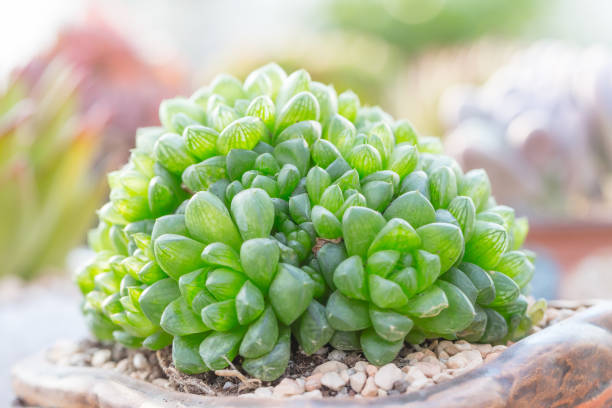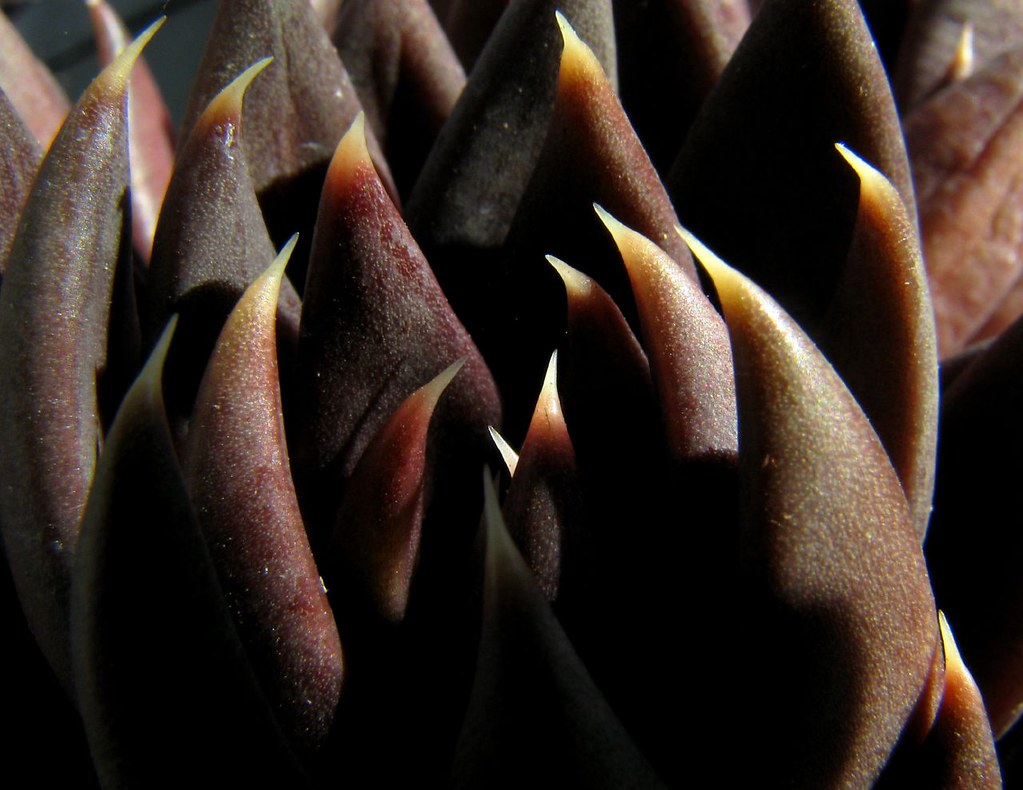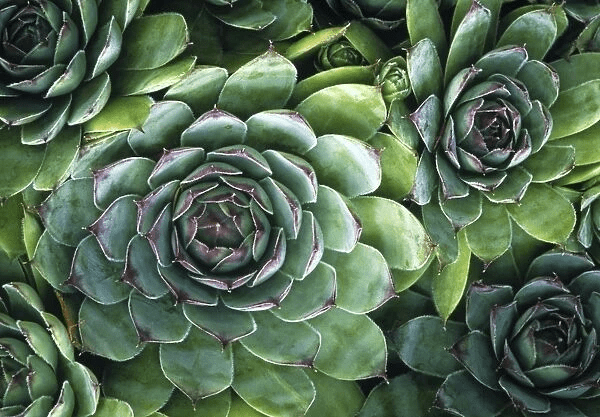15+ Safe Succulents for Pets: Safe and Non-toxic
I was eager to plant succulents in my garden but couldn’t because I have a dog in my house. Yes, it’s true, some succulents can be toxic to pets such as cats and dogs, causing them digestive problems when ingested.
There is no wonder succulent plants are popular houseplants, but if you have pets, you need to grow succulents that are safe for them. It is true; there are succulents that are safe to grow in the house with pets.
Now the question is, which succulents are safe? To help you out, I have explained some popular succulents that are safe for pets, such as dogs and cats.
Safe Succulents:
Growing the succulents in your house to easy as they are low-maintenance plants, especially for beginner gardeners. There are many types of succulents and you need to know which are safe for your pet as there are many succulents that are toxic for house plant keepers and house pets.
Hence, to help you determine which succulents are safe for pets to plant, I have compiled a list of the top 15 succulents if you have dogs or cats in your house.
15+ Safe Succulents for Pets:
There are many succulents that are not safe for pets for example aloe and jade. The below-mentioned succulents are non-toxic and pet-friendly with different colors, shapes, and sizes and are easy to maintain.
Haworthia (Haworthia spp.)
| Plant name: | Haworthia |
| Lighting: | Bright, indirect light |
| Watering: | Low |
| Bloom time: | Summer |
| Popular varieties: | ‘Cooperi’‘Cymbiformis’‘Truncata’ |
- In case you want to plant aloe succulents in your house but you are having pets then the other option to plant is haworthia. Aloe is succulents that are very toxic if get infested.
- Planting Harwothia though has a similar spiky look with the same color but still, they are safe for your pets.
- These succulents are available in different varieties.
- They do have horizontally striped, structural leaves.
- You can place them on the tabletop as a display.

Some other haworthia varieties are:
Haworthia cooperi:
These are varieties having fleshy, and translucent leaves. Growing these plants will attract everyone’s eye.

Haworthia cymbiform:
The Haworthia cymbiform have leaves that are in rosette shape which are translucent also.

Haworthia truncata:
The Haworthia turncata are succulents having flat leaves that are used to grow in a stacked pattern.

Echeveria (Echeveria spp.)
| Plant name: | Echeveria |
| Lighting: | Bright light |
| Watering: | Low |
| Bloom time: | Late spring to summer |
| Popular varieties: | ‘Lipstick’‘Alta May’‘Black Knight’ |
- The echeveria are safe succulents that come under the most popular succulents category.
- They do have gorgeous rose-shaped forms and contain fleshy leave that makes a good combination.
- The echeveria has also created tons of colorful cultivars having different sizes and shapes.
- They are low-maintenance succulents that love to grow in bright light and less watering.
- The succulent is suitable for a terrarium.

Some other types of echeveria succulents are:
Echeveria agavoides Lipstick’:
These are succulents that have two-toned leaves with bright green centers which are framed in a line having deep red edging.

Echeveria ‘Alta May’:
They have ruffly, pink-toned leaves that are the main attraction point for others to get attracted.

Echeveria ‘Black Knight’:
These are the varieties having spiky, dark leaves that make them a showstopper succulent.

Burro’s tail (Sedum morganianum)
| Plant name: | Burro’s tail |
| Lighting: | Bright, indirect light |
| Watering: | Low |
| Bloom time: | Summer |
| Popular varieties: | ‘Sedum morganianum’ |
- It comes under the category of succulents that are best to plant in hanging baskets.
- The burro succulent has a thick tail and bluish-green leaves that are used to overlap each other and make a woven look.
- The leaves of the succulent are long with draping branches.
- You can plant them as an indoor or outdoor plant.
- The tail of the burro is only grown if you leaving in zone 9 so in case if you are leaving in a cooler area then you need to move the plant inside before the temperature goes down during summer.
- If you plant them outdoors and take care properly they will produce pink yellow or white succulent flowers.

Thanksgiving or Christmas cactus (Schlumbergera spp.)
| Plant name: | Thanksgiving or Christmas cactus |
| Lighting: | Bright, indirect light |
| Watering: | Low |
| Bloom time: | November to January |
| Popular varieties: | ‘Schlumbergera truncata’‘Schlumbergera bridgesii’ |
- These Thanksgiving succulents can be found easily in mountainous regions of South Eastern Brazil.
- Having aerial roots makes them grow into tree branches and rocks.
- These plants are easy to plant and are low maintenance.
- They do have segmented leaves and slender branches that make a graceful appearance.
- You can easily propagate these plants in the soil and water them regularly.

Easter cactus (Hatiora gaertneri)
| Plant name: | Easter cactus |
| Lighting: | Bright, indirect light |
| Watering: | Low |
| Bloom time: | February to May |
| Popular varieties: | ‘Hatiora gaertneri’ |
- Easter cactus Mein looks the same as Thanksgiving succulents but they are from different families.
- They do have rounder-shaped leaves That are Used To Bloom in Springtime.
- the flower of the circulant Bloom in different colors like pink Orange red and white
- These are safe succulents you can plant in a hanging basket.
- They come in the category of ultra drought tolerant as they don’t require to be water frequently during winter.
- The plant prefers to grow in bright, indirect light but make sure not to burn the leaf or branches of the plant.

Hen and chicks (Sempervivum spp.)
| Plant name: | Hen and chicks |
| Lighting: | Bright light |
| Watering: | Low |
| Bloom time: | Summer |
| Popular varieties: | ‘Fashion Diva’‘Greenii’‘Terracotta Baby’‘Raspberry Ice’ |
- These are the succulents that look similar to echeveria.
- If you are a beginner then planting echeveria are good option but hen and chick are the hardiest succulents.
- You can easily Grow them at a cool temperature.
- They are also able to grow as an outdoor planter if you are living in hardiness zone 4.
- They are also known as houseleekes.
- These succulents are able to grow quickly and produce new plants after spreading.
- The plant used to only once before when they produced a new plant and then died back.

Ponytail palm (Beaucarnea recurvata)
| Plant name: | Ponytail palm |
| Lighting: | Bright light |
| Watering: | Low |
| Bloom time: | Summer; flowers are rare on indoor plants |
| Popular varieties: | ‘Beaucarnea recurvata’ |
- Ponytail palms are unique-looking plants.
- They come under the drought-tolerant second category that is able to store the water in their thick bulbous trunk.
- They are used to grow a mass of curling leaves that give them a cartoonish look which will bring smiles to your faces when you look at them.

Aeonium (Aeonium spp.)
| Plant name: | Aeonium |
| Lighting: | Bright, indirect light |
| Watering: | Low |
| Bloom time: | Late winter to spring |
| Popular varieties: | ‘Arboreum’‘Zwartkop’‘Atropurpureum’ |
- The aeonium is succulant that is native to Mediterranean and canady islands.
- They used to grow in Vibrant rosette shape.
- These are safe succulents having low maintenance.
- They grow in a spoon-shaped leave which you can find in bright green, deep burgundy, and multicolor variegated shades.
- They are also Bloom only once in their lifetime just like Hen and Chicks.
- The parent plant of this category is used to produce a new plant before dying.
- The flower is used to Bloom on a mature plant during late winter to spring that will make your garden and indoor place look attractive.

Elephant bush (Portulacaria afra)
| Plant name: | Elephant bush |
| Lighting: | Bright, indirect light |
| Watering: | Low |
| Bloom time: | Flowers are very rare when grown indoors |
| Popular varieties: | ‘Portulacaria afra’ |
- If you are willing to plant Jade in your house but can’t because of your pet then you will like the look of elephant Bush sculland which is non-toxic.
- They do have boast fleshy leaves that grow in solid green or variegated color.
- These plants are native to South Africa and are used to grow up to 20 inches tall but now they usually grow about 2 inches in height if you plant them as a house plant.
- As per the name, they are a good snack foraging elephants in the wild.
- You can also eat the leaves of the plant occasionally in salad or soup.

Sedum (Sedum spp.)
| Plant name: | Sedum |
| Lighting: | Bright light |
| Watering: | Low |
| Bloom time: | July through late fall |
| Popular varieties: | ‘Adolphii’‘Purple Emperor’‘Frosty Morn’‘Angelina’ |
- The sedum is also known as a stonecrop.
- They are native to the northern hemisphere.
- The sedum is available in different types.
- These succulents come in two categories such as creeping and clumping.
- They used to grow taller, about 1 to 3′ tall.
- You can plant this outdoors for blooming plants.
- If you want to grow them indoors they are perfect for your hanging basket and tabletop pots.
- They are used to store water in their fleshy leaves so they are drought tolerant.

Lithops (Lithops spp.):
| Plant name: | Lithops |
| Lighting: | Bright light |
| Watering: | Low |
| Bloom time: | Late summer to fall |
| Popular varieties: | ‘Localis’‘Salicola’‘Optica’ |
- The lithops are also called living stones that look very colorful like pebbles having thick smooth and speckled leaves.
- This plant is slow-growing but easy to care for.
- They are native to South Africa and mostly planted by house plant collectors.
- These safe Succulents are used to grow underground and really reach higher than 1 inch above the ground

Gasteria (Gasteria spp.)
| Plant name: | Gasteria |
| Lighting: | Bright, indirect light |
| Watering: | Low |
| Bloom time: | Winter to spring |
| Popular varieties: | ‘Little Warty’‘Rawlinsonii’‘Armstrongii’‘Pulchra’ |
- The gasteria does look similar to haworthia having a spiky, textured leaves pattern for contrasting white and green color.
- They are available in species having flat leaves of different appearance.
- They are totally safe succulents that grow best in bright and indirect light.
- If the plant is properly cared for it will like to produce stomach-shaped flowers.
- They used to grow pinkish-green flowers on the underside of long thin stems.
- This flower is used in Bloom in winter through spring.

Moonstone (Pachyphytum oviferum):
| Plant name: | Moonstone |
| Lighting: | Bright light |
| Watering: | Low |
| Bloom time: | Winter to early spring |
| Popular varieties: | ‘Pachyphytum Oviferum’ |
- Moonstone is a good choice for planting them as a safe succulent if you have pets in your home.
- They are used to grow in rose-shaped succulents having different varieties of color like blue pink purple yellow orange and Grey.
- The leaves of the moonstone are egg-shaped.
- If we compare it to other sick leave and they more delicate.
- The flower used to grow in clusters during winter to Early Spring having a bright color.

Ghost plant (Graptopetalum paraguayense)
| Plant name: | Ghost plant |
| Lighting: | Bright light |
| Watering: | Low |
| Bloom time: | Spring |
| Popular varieties: | ‘Filiferum’‘Alpenglow’‘Blue Giant’‘Debbie’ |
- Ghost plants are also called the mother of pearl plants.
- They are relative to Mexico.
- The ghost plants that are native to Mexico.
- They do have fleshy, triangular leaves which do form a rosette on the trailing stem.
- The leaves come in different varieties of color such as blue, pink, and purple.
- Used to grow adorable clusters of star-shaped flowers during the springtime.
- As they are low maintenance plants like Echeveria but give more. Carrion flower (Stapelia spp.)

Carrion flower (Stapelia spp.)
| Plant name: | Carrion flower |
| Lighting: | Medium light |
| Watering: | Low |
| Bloom time: | Mid-summer to early fall |
| Popular varieties: | ‘Variegata’‘Hirsuta’‘Grandiflora’‘Gigantea’ |
- The carrion flowers are called starfish plants.
- The flowers of the plant are star-shaped which are large and boyfriend colors having spotted patterns that make them unique.
- The appearance of the flower makes this plant a delightful succulent.
- They are used to grow or not this time from the plant center which makes them perfect for planting in hanging baskets or table tops.
- They do need minimum watering and during winter the Moisture level is decreased more.

Conclusion:
As per this list of different types of succulents will help you to know which ones are safe succulents if you have pets in your house. Many people don’t know much about this difference so this article will help them to know about succulents and identify them easily.


